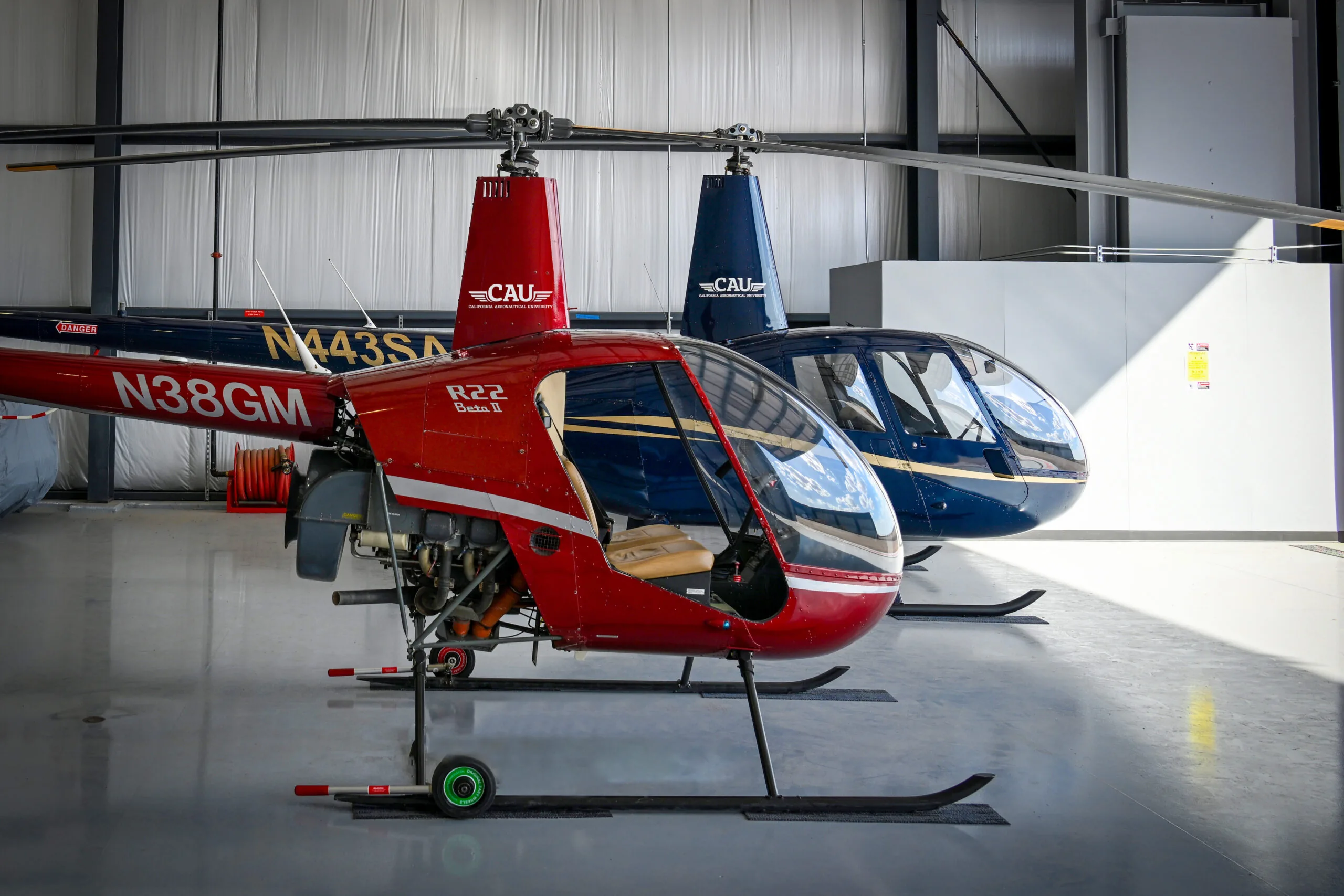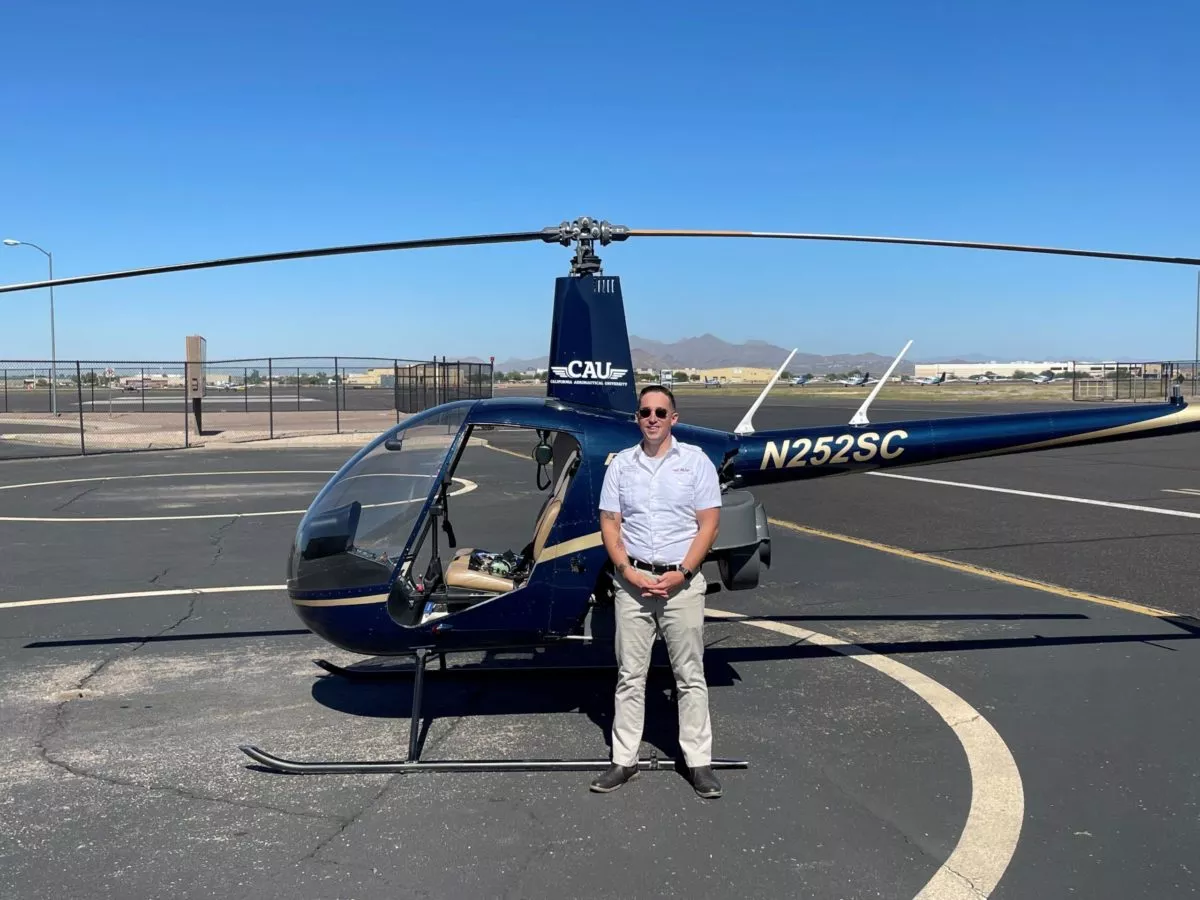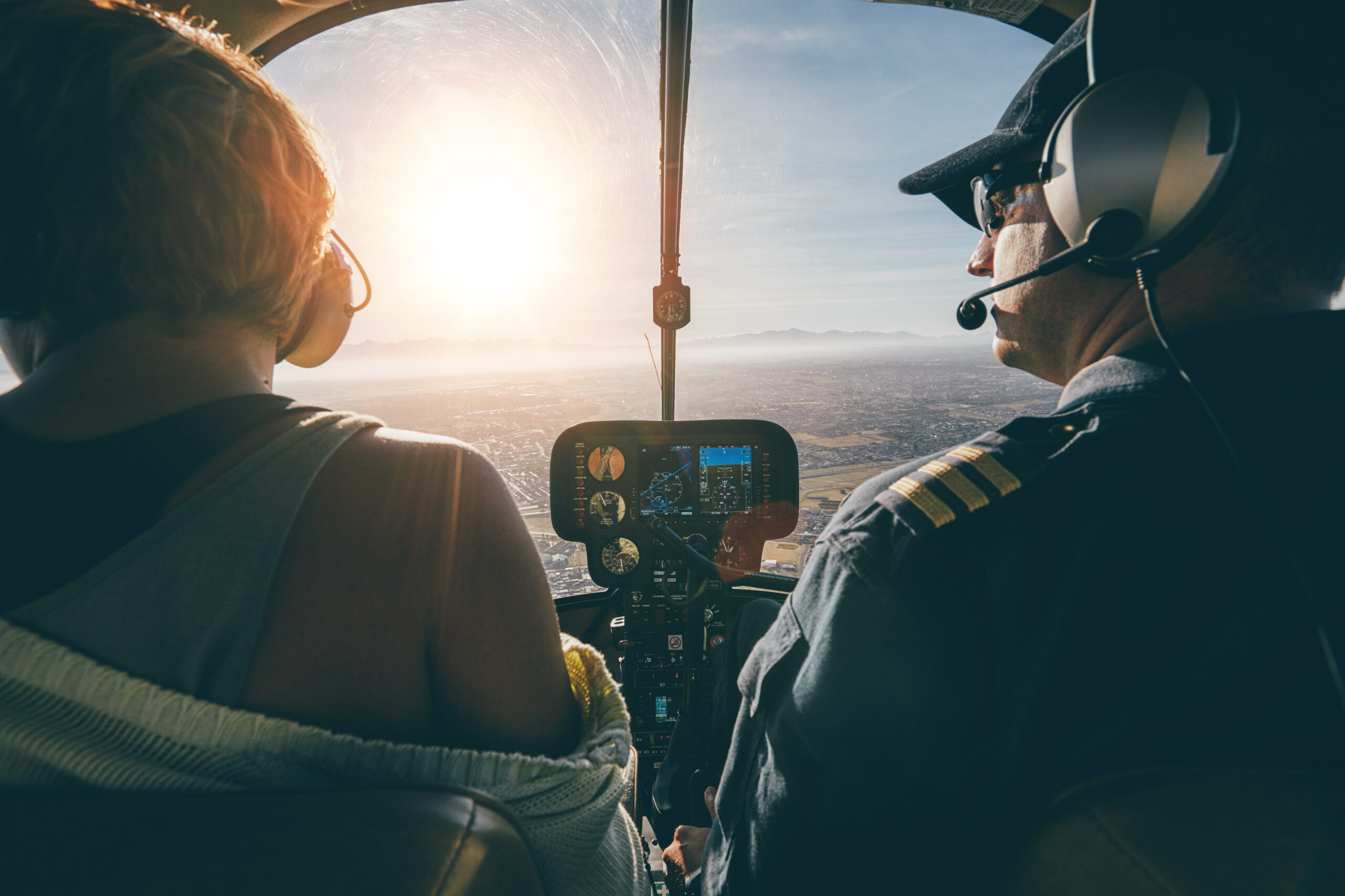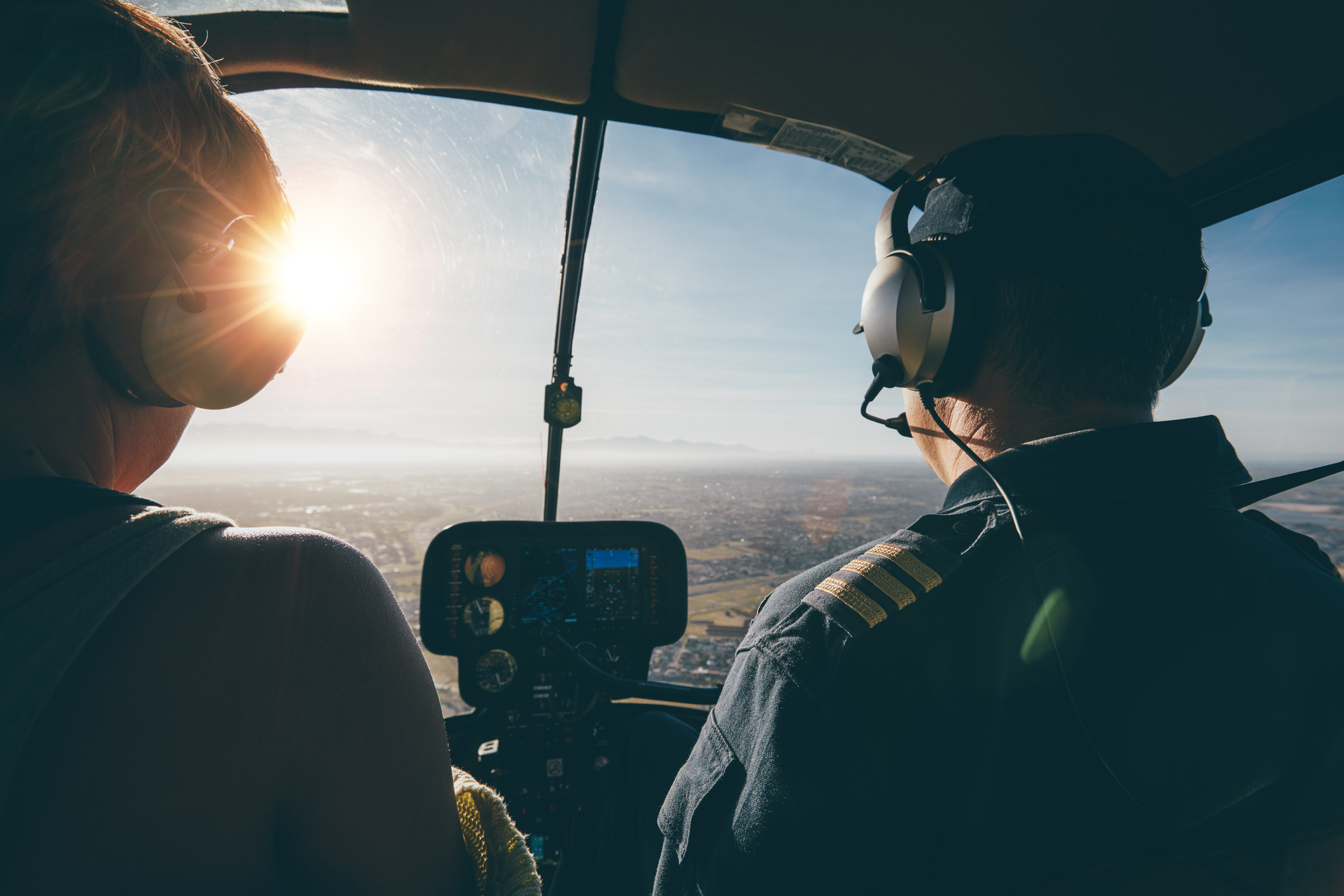There are many reasons why helicopter pilots decide to undergo pilot training. For some, it was about embarking on a new career path. For others, it may have just been a hobby – or the desire to own and operate their private helicopter.
Are you interested in becoming a helicopter pilot?
Regardless of your reason, helicopter pilot training involves coming face-to-face with many different types of rotorcraft. Two of the most common are the Robinson R22 and the Robinson R44.
Keep reading for a closer look at each.
An Up-Close Look at the Robinson R22 Helicopter
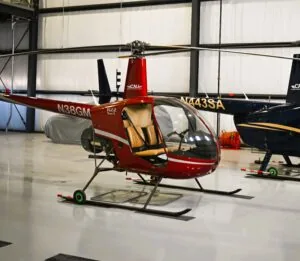 The Robinson R22 is one of the most economical 2-seater helicopters on the market, but they do not lack quality. They are small, easy to maneuver, and fun to fly. It is no wonder that they are one of the most popular helicopters.
The Robinson R22 is one of the most economical 2-seater helicopters on the market, but they do not lack quality. They are small, easy to maneuver, and fun to fly. It is no wonder that they are one of the most popular helicopters.
The R22 is light, so you can quickly get it off the ground, flying and cornering it with little effort. It is very responsive to touch and easy to handle. Because of its lightness, however, it has a hard time holding its own in the wind – and this could make things tougher on the pilot.
Unlike other helicopters, the R22 is relatively simple to fly without too many complex systems. For those who are just starting out, this is a plus. This also means that it does not have many frills either. Aside from a standard (or upgraded) GPS, the perks of the interior include air conditioning and heating, as well as luggage space underneath the seats.
Perhaps the best part? It is small enough to land just about anywhere – and can be fueled up just about anywhere, too. This can be quite convenient in certain situations.
An Up-Close Look at the Robinson R44 Helicopter
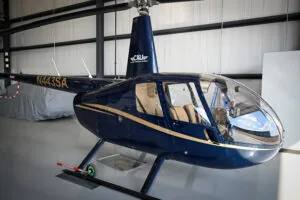 Helicopter pilots offer a lot of praise for the Robinson R44. When it comes to training, this rotorcraft often finds itself at the top of the list. What makes it so great?
Helicopter pilots offer a lot of praise for the Robinson R44. When it comes to training, this rotorcraft often finds itself at the top of the list. What makes it so great?
Unlike the R22, this helicopter is heavy. It can make its way through turbulence and wind gusts much easier while remaining steady. This stability is more comfortable for everyone onboard, including the student pilot. For those who are learning, handling the helicopter without having to spend all your time focused on fighting the wind (as with the R22) is a game-changer.
The R44 is a 4-seater, which can be beneficial when using your private pilot license. After passing the exam, you may be able to carry passengers without compensation.
Even though this helicopter is substantially heavier than the R22, it does not feel like it is. Instead, it quickly responds to touch, moving briskly and handling easily while providing a smooth ride.
The R44 has a radio for in-flight music, effective GPS equipment, and much more. This helicopter is a great go-to option for those looking to learn how to fly and safely maneuver a rotary-wing aircraft.
How to Transition from a Robinson R22 to a Robinson R44
It is common for pilots in training to learn how to fly a helicopter using the Robinson R22, converting to the Robinson R44 a little later. Both aircraft offer what is needed for successful training and growth in ability.
Moving from the R22 to the R44 is much less challenging than you may think. Many agree that it is like flying the same helicopter – just a larger version. In reality, though, there are a few differences.
The R44, for example, has a longer tail due to its increased size. When flying this helicopter, you cannot see the tail – something you do not have to think about in the R22. Many students need some time to get comfortable with this feature.
There are also different types of the Robinson R44; this can either be similar or quite a shock from what you are used to with the R22. For instance, the R44 Astra is an older version of this model, and its controls are somewhat heavy. Someone converting from an R22 may need more time to get used to it before finding it comfortable to fly. Another model, the R44 Raven I, has a hydraulic system – whereas the R22 does not. Finally, the R44 Raven II has fuel injection, which can significantly impact how it starts – especially when the engine is already warmed up.
Flying the rotorcraft itself is very comparable between the R22 and the R44. Once you know how to command a helicopter, you should be able to continue doing so even if the specs change. After all, it should be like riding a bike.
R44 vs R22: Which One is Right for Me?
There is no clearly defined winner (or loser, for that matter) when it comes to the R44 and R22. Robinson did an excellent job designing each of them, giving each their specific perks. If you are currently in training – or will be – there is a good chance you will one day fly one or the other – or both.
There is one more consideration that may affect some potential pilots: these helicopters are both sensitive to weight limits, someone who weighs 200+ lbs. cannot realistically fly in the R22 and will need the R44. Someone who is lighter in weight may be able to fly both.
Remember, the R22 is a light, simple, and fun helicopter that is easy to maneuver and performs as expected. Be sure to pay careful attention to the wind to keep it steady. The R44 is a bit heavier, allows for passengers, and is quite versatile in calculating fuel/ passenger weights.
Many different types of helicopters are available, but not all are well-suited for training. The Robinson R22 and the Robinson R44 can be found in pilot training schools worldwide. If you ask anyone who has been through training, it is not uncommon to hear that these are the exact helicopters they used. This alone is a good indicator that they are each awesome helicopters for those who are just beginning as well as for seasoned pilots.
Robinson has achieved much success in producing the R22 and the R44.
Ready to soar in your aviation career?
Mr. Matthew A. Johnston has over 23 years of experience serving various roles in education and is currently serving as the President of California Aeronautical University. He maintains memberships and is a supporting participant with several aviation promoting and advocacy associations including University Aviation Association (UAA), Regional Airline Association (RAA), AOPA, NBAA, and EAA with the Young Eagles program. He is proud of his collaboration with airlines, aviation businesses and individual aviation professionals who are working with him to develop California Aeronautical University as a leader in educating aviation professionals.
